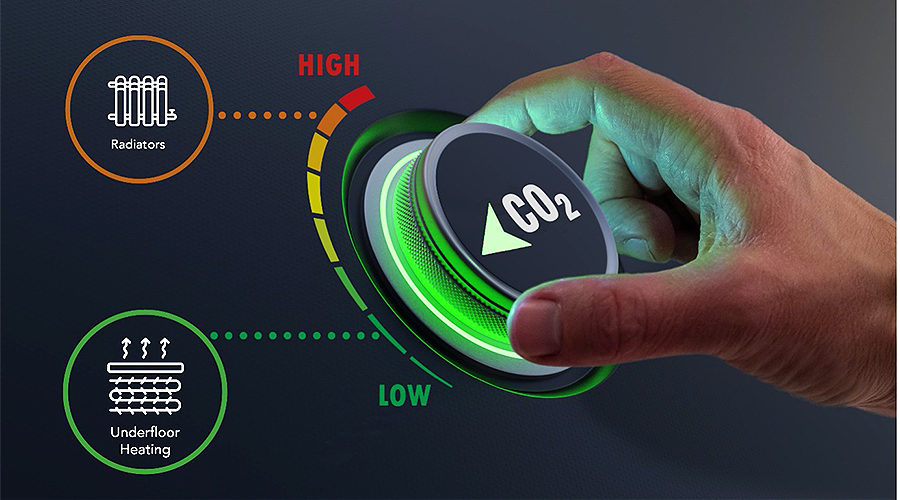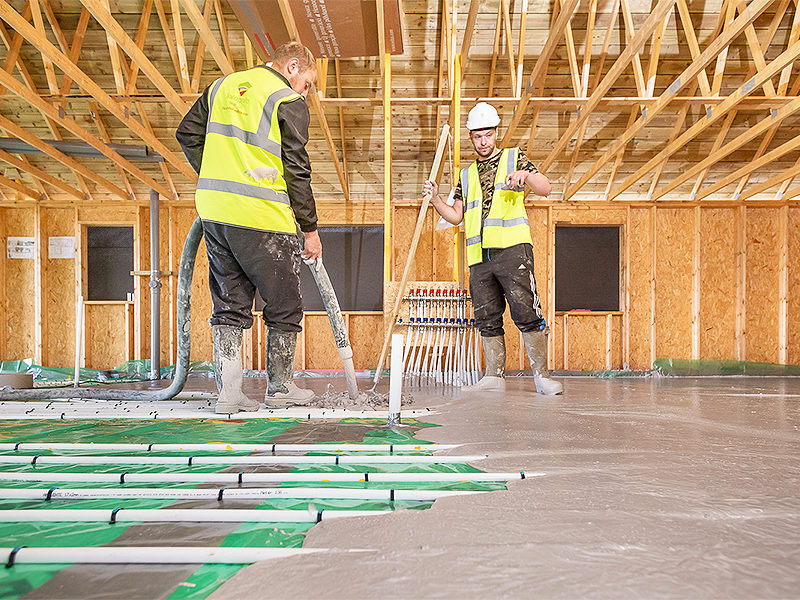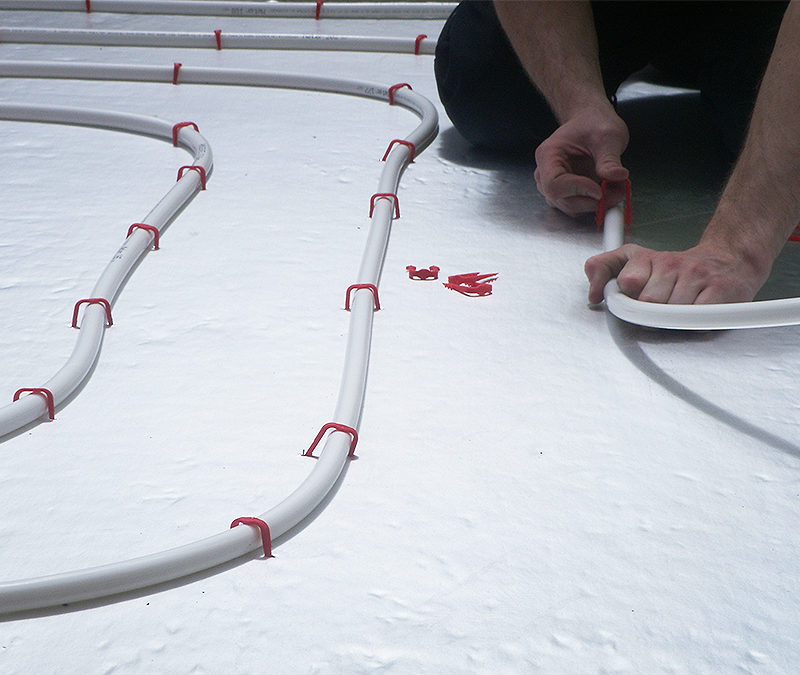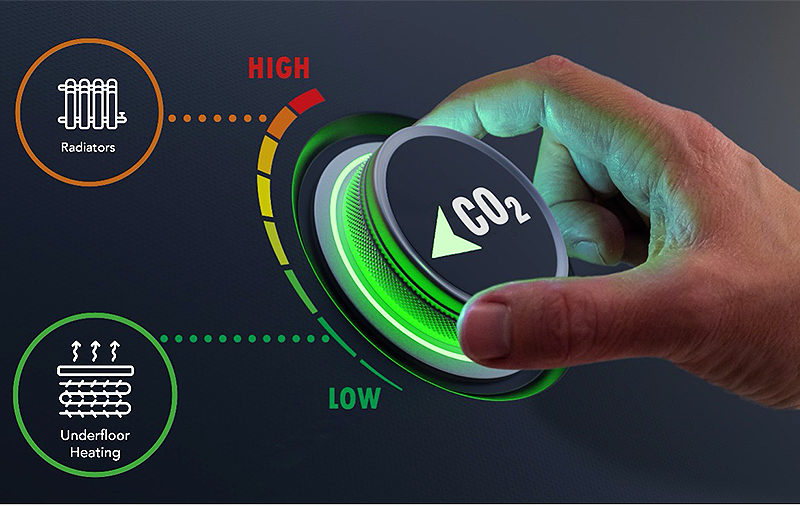When it comes to reducing a building’s carbon footprint, in the first instance and over its lifetime, there are many factors to consider, including embodied carbon. Supporting the industry to reach its sustainability goals, here Joanna Crown, Marketing Director at WMS, takes a closer look at the specification of heating systems and explains why underfloor heating is the ideal, futureproof solution.
WMS
The way we heat domestic properties is evolving following the introduction of the low water temperature update to the Building Regulations and Part L. These new rules are forcing the changes required to achieve a net-zero-emissions state in the UK by 2050.
While these new regulations only focus on reducing the carbon footprint of a newly-built or refurbished property in terms of operating the building, they also put a sharp focus on the broader carbon impact of the products and materials specified – the embedded carbon.
In brief, embedded carbon calculates all the CO2 emitted in producing materials. Embedded carbon calculations are estimated from the energy used to extract/transport raw materials and the emissions generated during manufacturing. As such, the carbon footprint of a heating system is not only dependent on the energy consumed or wasted but is also inclusive of the manufacturing processes and the product lifespan. The embedded carbon figures must also include the eventual disposal of the products/materials within the system.
Embedded carbon in focus
With underfloor heating becoming an even more popular choice in light of the new regulations, the benefits of this, naturally, low-temperature system are often compared to those of a traditional radiator system when crucial specification choices are being considered.
Aside from underfloor heating addressing every new requirement, the ability to seamlessly pair with renewable heat sources, such as air-source heat pumps, and also reduce energy bills, such systems have also now been proven to have low embedded carbon compared to radiators. When all key statistics were considered during a recent WMS study, underfloor heating was confirmed to have very low embedded carbon when compared to radiators.
WMS carried out the study to better understand how underfloor heating compares with traditional radiator systems. The foundation of WMS’ analysis referenced key statistics from a Government report1 about the carbon impact of manufacturing building materials. The report states that the manufacture of iron and steel products have a 7.1MTCO2e (metric tons of carbon dioxide equivalent), compared with plastic products with a 3MTCO2e – 58% less than iron and steel.
Another key factor is material volume. An underfloor heating system installed in an average house with 10 rooms over two floors would require 42% less material (129.4kg) compared with 222.6kg of material for an equivalent standard radiator system. The kg, and consequently the volume of material, would also increase further for larger, low-temperature radiators, which are needed to meet the demands of the new 55°C flow temperature update following last year’s Building Regulations and Part L revisions.
Sustainable product lifecycles
As well as offering hugely reduced embedded carbon statistics, underfloor heating pipework is sustainable, from manufacture through to decommissioning.
A traditional radiator system is likely to need replacing after 25 years, which means, within the lifespan of a typical building, the radiators would need to be replaced up to three times. This adds to material, decommissioning and re-installation costs over time and further adds to the system’s carbon impact. While radiators can be recycled once decommissioned, the carbon produced during the recycling process is extremely high.
In contrast, underfloor heating pipework is typically guaranteed for up to 75 years and, in most cases, it will likely outlive the building itself, but the benefits don’t stop there.
High-quality underfloor heating pipe, made from superior quality, five-layer PE-RT (polyethylene of raised temperature resistance), can also be melted down safely and reused, further underlining the sustainability factor of this significant component of an underfloor heating system.
All of the above elements added together revealed that switching to underfloor heating will reduce the embedded carbon in a dwelling by a staggering 93%. With this knowledge, coupled with a focus on the decarbonisation of UK homes, the time is now to be conscious of the carbon impact of the way we heat, the sustainability and the ultimate effects of material choices on our environment, from the impact today and that long into the future.










